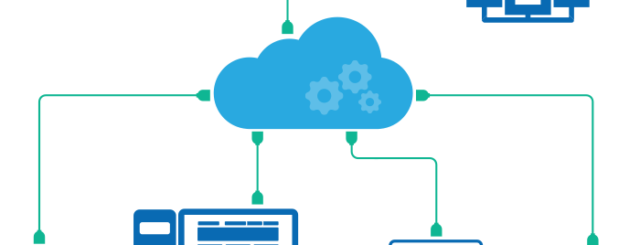When clients ask what the best platform is for their growing company, we always consider the answer based on their specific requirements. Usually, most need near real-time data for a relatively low price without the need to maintain an application infrastructure or, of late, a data warehouse infrastructure.
Cloud Computing is the delivery of on-demand resources (computational power, database storage, applications or other IT resources) over the Internet. It is achieved by using a network of remote servers hosted on the Internet rather than on an on-premise machine. A cloud service is any service made available to users via the Internet using a cloud provider’s server. Infrastructure as a Service (IaaS), Platform as a Service (PaaS) and Software as a Service (SaaS) are the three categories of cloud services.
Infrastructure as a service (IaaS) is a form of cloud computing that provides virtualized computing resources over the internet.
Platform as a Service (PaaS) is a category of cloud computing services that provides a platform allowing customers to develop, run, and manage applications without the complexity of building and maintaining the infrastructure.
Software as a Service (SaaS) is a business that provides third-party software solutions that are delivered to a company over the Internet.
What is Public Cloud?
A public cloud, like Azure or AWS or Google, is a multi-tenant service based upon the standard model of cloud computing, where a service provider or a third-party provider provides resources, like storage and applications to the general public over a network, like the Internet. A multi-tenant environment is one in which the user’s server shares the network devices, storage and hardware with multiple others in the cloud.
Users typically have no control or visibility over the placement of the infrastructure. Services are either free, low cost or are on a pay-per-usage model, so no wastage of resources is there. The set-up is easy and inexpensive as the cost of applications, bandwidth and hardware are covered by the service provider.
It is different from the private and hybrid cloud, as private cloud is used by organizations for their own use, and hybrid cloud is a combination of public and private clouds.
The public cloud comprises a broad range of products and services related to cloud, including infrastructure as a service (IaaS), software as a service (SaaS), and platform as a service (PaaS). Of these services, IaaS is the most popular public cloud service, and is estimated to reach $45 billion by the end of 2018.
Here are some factors to consider while choosing a cloud data warehouse and BI platform:
- Volume of data
- Dedicated human resources for support and maintenance
- Scalability: horizontally vs. vertically (horizontal scaling means scaling by adding more machines into the resources pool, whereas vertical scaling means scaling by adding more power (CPU, RAM) to an existing machine)
- Pricing models
Data Volume
Data volume estimates are an important exercise to undertake. In general, if working with datasets ranging in the hundreds of TBs or in petabytes, then it is advised to go for non-relational databases. The architecture of such databases that supports working with huge data sets is ingrained in their DNA.
On the other hand, many relational databases have solid and time-proven query optimizers. They may be considered as an option for an analytics warehouse as soon as the dataset fits into a single node.
On-premise vs Cloud
Another important aspect to evaluate is the availability of dedicated resources for the maintenance, support, and fixes for the database, if any. This facet plays an important role in the comparison.
When an organization has dedicated resources for support and maintenance, it has earned itself more flexibility in terms of options in choosing the database platform.
Options are available for creating one’s own Big Data warehousing based on Hadoop or Greenplum, for instance. These systems do require significant setup, maintenance engineering resources, and skilled personnel.
Conversely, in the case of a lack of dedicated resources for maintenance, the options may change. The recommendation may be to go with a modern data warehouse solution like Amazon Redshift, Google BigQuery, or Snowflake. We will go into more detailed comparisons in our Part II of the blog. As an administrator or user, one need not worry about deploying, hosting, resizing VMs, handling replication, or encryption.
Scalability
When an organization starts working with a database platform, it’s expected to be scalable enough to support further growth. In general, database scalability can be achieved in two ways, horizontally or vertically.
Pricing
A major condition for commercial success is a well-defined pricing strategy, however, cloud service providers face many challenges around pricing. Clarity and transparency in pricing are beneficial for all the actors in the ecosystem, where the currently existing abundance of different pricing models makes decision making difficult for service providers, partners, customers and competitors.
Part II of the blog will go into more detail on the various cloud platform pricing models.
Conclusion
Advice on selecting the best cloud storage for customers isn’t applicable for larger SMBs with highly sensitive information or the enterprise. This is because cloud storage is complex, with many considerations to weigh in choosing the best option for the business.
A handful of customers even consider free cloud storage. This is clearly not an option for a business with a demanding workload for its storage platform.
Businesses must consider factors such as compliance, security, management, cost, performance, scalability, and service level agreements (SLAs).
In addition, the interplay between each one of the above factors plays a part in business cloud storage decisions.
Stay tuned for Part II of the blog where we will look at the most important considerations for making the right choice for a growing online presence. We will then compare the most popular cloud platforms.
Give us a call if you would like to get more in-depth advice on choosing a cloud platform.


Recent Comments